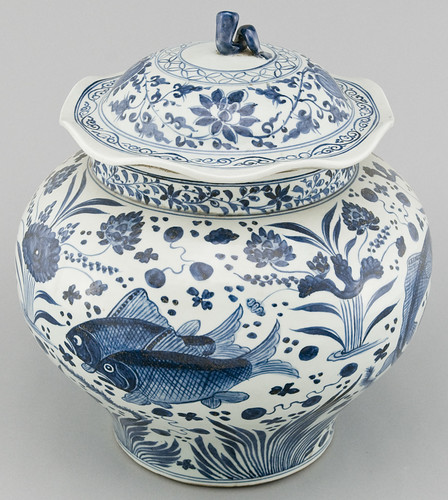Photo Credit: Silk Road Collection.
"Blue and white wares" 青花 qīng-huā are white pottery and porcelain decorated under the glaze with a blue pigment, generally cobalt oxide. The decoration is commonly applied by hand, by stencilling or by transfer-printing, though other methods of application have also been used.
Distinctive blue-and-white porcelain was exported to Japan where it is known as Tenkei blue-and-white ware or ko sometsukei. It is especially ordered by tea masters for Japanese ceremony.
Early influences: Chinese blue-and-white ware were copied in Europe from the 16th century, with the faience blue-and-white technique called alla porcelana. Soon after the first experiments to reproduce the material of Chinese blue-and-white porcelain were made with Medici porcelain. These early works seem to be mixing influences from Islamic as well as Chinese blue-and-white wares. - wikipedia
青花瓷(blue and white porcelain),又称白地青花瓷,常简称青花,
是中国瓷器的主流品种之一。






